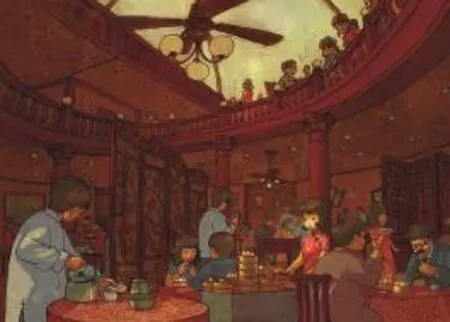CANTONESE CUISINE: ALL ABOUT FRESHNESS
Text by Zhuzhu
Translation by Sonia
Photos by VCG & Nipic
CANTONESE CUISINE: ALL ABOUT FRESHNESS
Text by Zhuzhu
Translation by Sonia
Photos by VCG & Nipic
The Cantonese cuisine we talk about today is actually a very vague term. In a broad sense, it refers to the collective of Guangzhou, Chaozhou-Shantou, and Hakka cuisines. The earliest Cantonese cuisine referred to exclusively Guangzhou cuisine, among which Shunde cuisine is the most representative.

In the time prior to the Qin Dynasty (before 221 BC), the Nanyue people habituating in the Pearl River Delta made a living by collecting aquatic products such as conches, clams, basket clams, and oysters. According to The Rites of Zhou, they “cooked crabs as food” and often “ate their food raw.” After Qin Shihuang (fi rst emperor, 259– 211 BC) conquered the south, the cultural and economic communications between the Han people in the north and the tribes in the south of fi ve ridges gradually frequented. When it came to the Han Dynasty, Zhao Tuo, King Wu of Nanyue Kingdom (240 BC– 137 BC), surrendered to the Han. The cooking skills of the north were brought to the south along with the culture. In the wartime of the Southern Song Dynasty (1127- 1279 AD), the fl eeing royal family brought their northern eating habits all the way to Guangdong, which made the Guangzhou cuisine the guardian of many ancient and authentic cooking methods. People in the south of the fi ve ridges were known for “eating everything may it be a bird, a beast, a worm, or a snake.” Those from the north, on the other hand, were renowned for cooking formal dishes. Combining the essence of the south and the north, it became the distinguished food in the south. At this stage, Guangzhou cuisine started to shape its path as a distinct cuisine and the term “southern cooking” fi rst appeared in the written record.
Compared with Chaozhou-Shantou and Hakka cuisines, Guangzhou cuisine emphasises more on the texture and taste, which is typically subtler, and is more critical about freshness. The ingredients must be fresh and in season, which is the most praised characteristic of Guangzhou cuisine. This highly matches Confucius's recuperation method “never eat what is not in season.” As a result, there are different eating methods for different seasons in Guangzhou cuisine: eat lightly in spring, eat coolly in summer, eat moistly in fall, and eat warmly in winter. Take the hot summer days for example. Lychee with duck stew is a must-eat in Guangzhou cuisine: budding lotus, newly ripen lychees, and fat, juicy earlygrain ducks are stewed together. Each ingredient is seasonal and the combination is beyond imagination; the taste is fresh, sweet, and fragrant; and the dish serves the function of releasing heat from the body.
The freshness of Guangzhou cuisine is further practiced in its cooking methods. The fl ame can neither be too red nor too blue. Food is rarely cooked with soy sauce or heavy seasoning but by steaming, poaching, and boiling. The purpose is to remain the taste and fl avour of the food. Shunde fi sh is a perfect example. The fi sh meat is clear and transparent after the chef drains the blood and slices the fi sh speedily; it tastes even sweeter and smoother after being placed on ice to cool off. The raw fi sh is eaten with a dozen seasonings, including oil, salt, sugar, sliced ginger, sliced green onion, sliced chilli pepper, soy sauce, ground peanuts, sesames, sliced fried taro, and fried bean noodles. A bite of the fi sh mixed with the spices echoes tenderness, sweetness, and freshness, a divine experience for the eater.

